The Best Tours to the Ancient Wonders pyramids of Giza
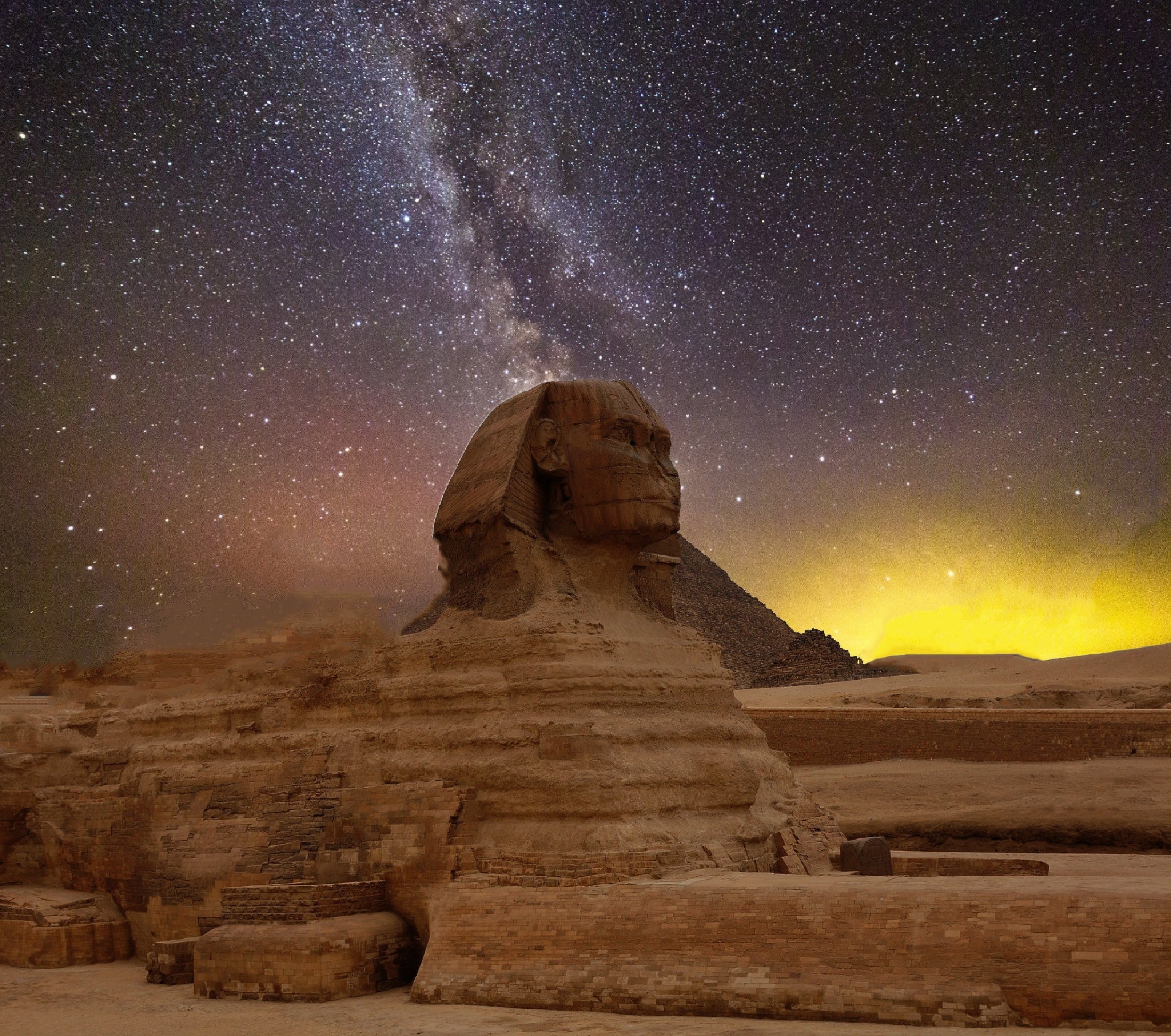
What you should know about Mysterious Giza
One of the most popular tourist destinations in Egypt is Giza. It is one of the country’s largest cities. Situated on the west bank of the Nile River, 85,153 km2 southwest of Cairo. Giza is home to numerous Pharaonic monuments, including The Pyramids of Giza, one of the world’s seven ancient wonders. Other popular tourist destinations in Giza include the Zoser Step Pyramid, Dahshur, Memphis, and Valley Temple Complex with the spectacular Sphinx. They are all connected by a mysterious process that is rooted in ancient Egyptian rituals and traditions.
Great Pyramid (Pyramid of Khufu)
The Great Pyramid of Giza, also known as the Pyramid of Cheops, is not only the most well-known structure at this ancient site but also one of the most well-known in the entire world. It was constructed by Khufu. Herodotus claims that 100,000 workers put in three months a year building it. The cubic volume of this enormous structure is astounding. The Great Pyramid measures 2.3 million cubic meters in volume when the internal chambers and the rock foundation are excluded. The vertical height is 137.2 meters, while the base measurement is 227.5 meters. The King’s, Queen’s, and Subterranean Chambers, the Grand Gallery, as well as several shafts and corridors, make up the internal structure. The original entrance and a forced route are the two entrances to the pyramid. One path leads down into the Subterranean Chamber from there, and the other leads up to the Grand Gallery.
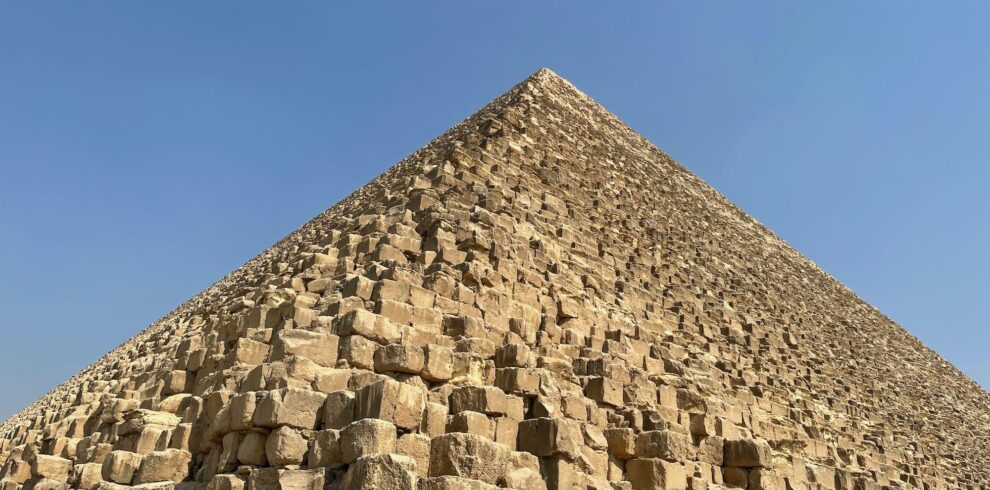
Pyramid of Chephren (Pyramid of Khafre)
Khafre Pyramid (also known as the Pyramid of Chephren) is the second largest pyramid in Egypt. 160 meters to the southwest of the Great Pyramid is the Pyramid of Chephren. Built by Khufu’s son Khafre, it initially gives the impression that it is bigger than his father’s earlier pyramid since it is situated on a higher plot of ground. On the top of the pyramid, a sizeable portion of the original limestone casing has survived to survive. The design of the funeral temple on the east side is visible. The pyramid is 135.5 meters high, and its base is 210.5 meters wide. Pharaoh decided to build the pyramid to serve as a tomb and to make its essence remain forever. Additionally, it was designed to serve as an example of strength and durability after death. This was because the ancient Egyptians believed that there was life after death.
One burial room measures 14 by 5 meters in size and has a pretty massive sarcophagus as well as jars where the ruler’s internal organs were preserved. The tomb’s two entrances and two tunnels leading to the burial chamber set it apart from other pyramids. Since the tomb was constructed in two tiers, the thieves couldn’t enter the pyramid without using the additional entrance. The hall in the middle of the lower corridor is the Khafre pyramid’s greatest mystery. Given that they are in the main chamber, it is obvious that this is not a burial room or a container for a canopy. Most likely, this was where the treasury was. But there is no evidence to support this theory.

Pyramid of Mycerinus (Pyramid of Menkaure)
The Pyramid of Mycerinus (also known as the Pyramid of Menkaure), which is made of extremely huge limestone pieces. It is the smallest of the three main pyramids of Giza. Its base measures 108 meters, and its vertical height is 62 meters. Three incomplete lesser pyramids on the south side of the main pyramid were built for the pharaoh’s relatives. The rocky escarpment, is located four kilometers south of the Pyramid of Mycerinus. It offers the best panoramic views of the entire site’s pyramids. Compared to Khufu and Khafre, the Mortuary Temple of Menkaure is bigger and more complex. So perhaps instead of creating a huge pyramid during the time of Menkaure, secret graves were carved out of the rock and grand Mortuary temples were constructed. Due to his interest in it, Menkaure made his burial temple the most noticeable among those on the plateau under the pyramids.
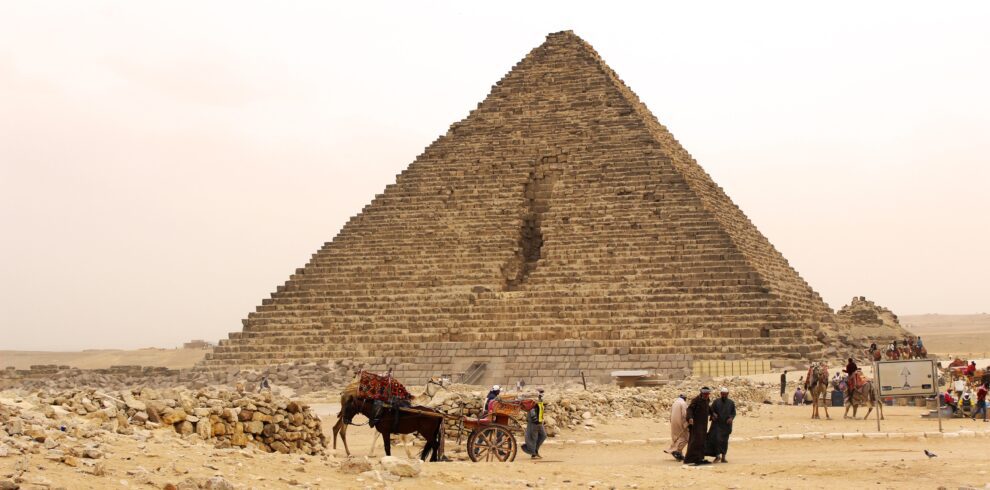
The Sphinx
The mysterious Sphinx is a simple but exquisitely constructed granite sculpture fashioned like a recumbent lion. East of the pyramids is where it is situated. After the Great Pyramid itself, it is undoubtedly Egypt’s most famous structure. It is made of natural rock and has a pharaoh’s head (often identified as Chephren), as well as a cobra and a regal headdress. Despite extensive damage from weathering and intentional mutilation throughout the years, the Sphinx nonetheless exudes a striking sense of majesty and aesthetic excellence. The figure’s height is 20 meters, and its whole length is 73.5 meters. Arab historians claim that the nose was likely destroyed at some point during the reign of the Islamic Empire.
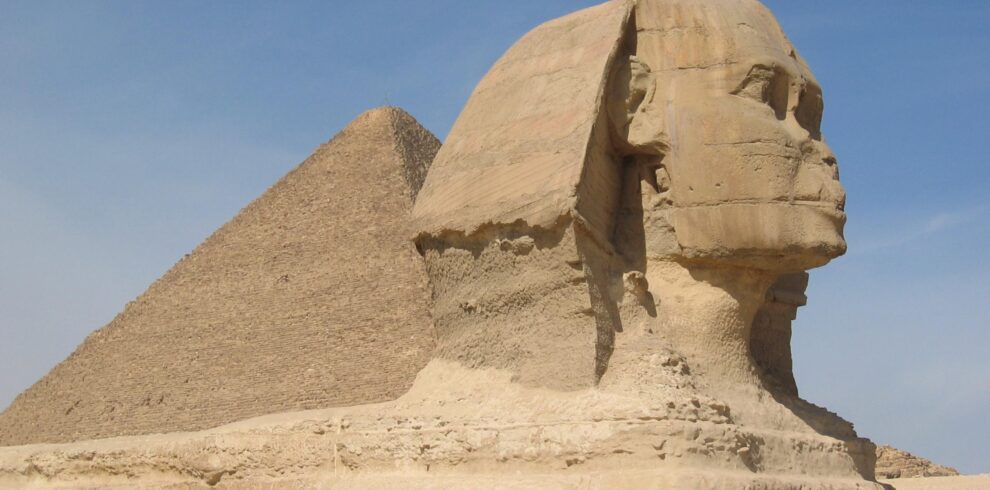
Pyramids Sound & Light Show
One of the Seven Wonders of the Ancient World and one of the most popular tourist attractions in Egypt is the Giza Pyramids. At night, when lasers, lighting, and visual projections bring their past to life, it provides a completely new experience. It enables you to view these historic structures illuminated against the backdrop of the night sky as the Sphinx provides a story-telling soundtrack. frequently have a second or third showing in either Italian, Spanish, French, or German.
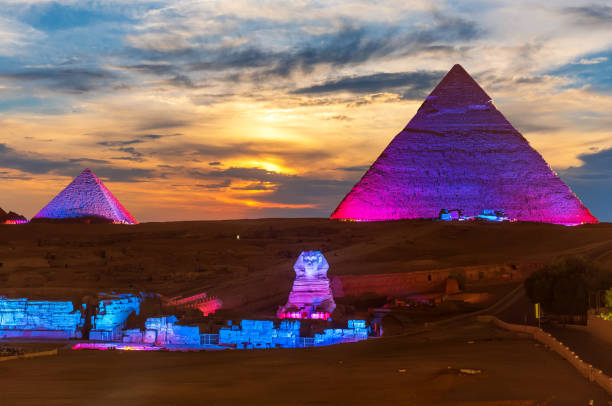
The pyramid of Zoser (Djoser)
According to history, Egypt’s first king, Menes, established the ancient city of Memphis approximately 3100 B.C. During the Early Dynastic Period (about 3100–2686 B.C.) and the Old Kingdom (around 2686–2181 B.C. ), it served as the kingdom’s capital, and it continued to be one of Egypt’s most significant towns for at least another three thousand years. The quantity and size of the necropolises and burial structures that can still be seen in the vicinity, such as the Giza plateau with its three iconic pyramids or, in this instance, the Saqqara necropolis, serve as evidence of the city’s ancient history. The site of this distinctive step pyramid, one of Egypt’s most recognisable structures, is a burial cemetery farther south than the cenotaphs of Khufu (Cheops), Khafre (Chephren), and Menkaure (Mycerinus).
The step pyramid at Saqqara was constructed as a mausoleum for the pharaoh Necherjet Dyeser by the polymath Imhotep, who is recognized as history’s first architect and engineer in addition to being a doctor, astronomer, and mathematician. It represents a historical turning point in which royal remains are now interred in pyramids rather than mastaba tombs (flat-roofed, rectangular structures). This step pyramid is actually a collection of mastabas that have been stacked one above the other in diminishing size.
Although it now appears to have been a whim or a whimsical act on the part of the learned Imhotep, it represented a significant shift in many ways at the time. This massive building, which is made of stone (as opposed to the usual mastabas, which were made of adobe), is situated within a walled burial cemetery that also contains other temples and symbolic monuments. Its base spans 140 by 118 meters. It was the first pyramid to have six levels, and when it topped out at 60 meters tall, it marked a major turning point and established the architectural style for later pyramids.

